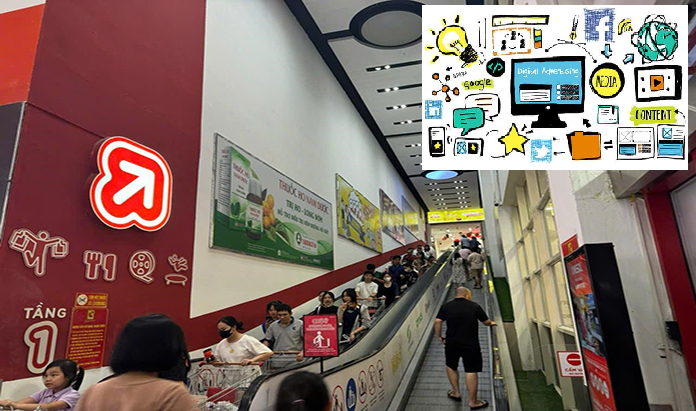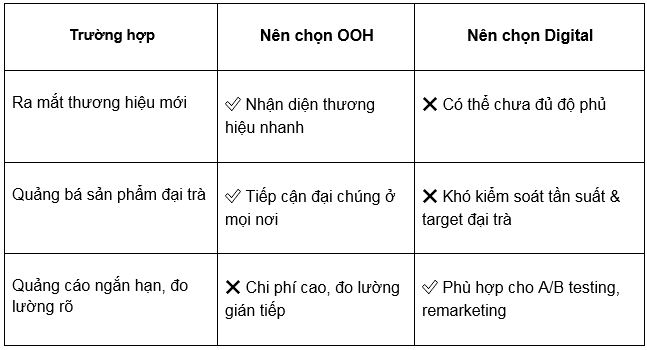In the digital age, businesses often ask: should I invest in outdoor advertising (OOH) or digital advertising? Each form has its own advantages and disadvantages, but when comparing costs, effectiveness and coverage, the answer may surprise you.

1. Implementation costs: OOH is higher, but more sustainable
Conclusion: OOH costs are higher initially, but in terms of time and coverage, OOH brings long-term brand effectiveness, while digital can quickly drain the budget if not continuously optimized.
2. Coverage and recognition
-
- OOH: Always appear before users in public places, major intersections, shopping malls, helping the brand to be present 24/7 without users needing to "click".
- Digital: Depends on online behavior - users can skip, block ads, or not see them if the target is wrong.
Statistics from Nielsen: OOH helps increase brand recognition by 40% when combined with digital - showing the mutual support power between the two channels.
3. Measure effectiveness & interaction
-
- Digital: Can measure views, clicks, conversions (CPC, CPM, ROI…) in detail.
- OOH: Indirect measurement data via AI cameras, traffic, QR interactions, social listening…
Although not “clickable”, OOH is an extremely powerful channel to trigger emotions, remember and position the brand, especially for mass or high-end products.
4. Conclusion: Should you choose OOH or Digital?
Smart strategy: Combine OOH + Digital to maximize effectiveness
OOH helps create trust and recall, while digital helps increase interaction and conversion. Market-leading brands such as Vinamilk, Samsung, Biti’s… all combine both channels to cover multiple points and optimize advertising costs.












